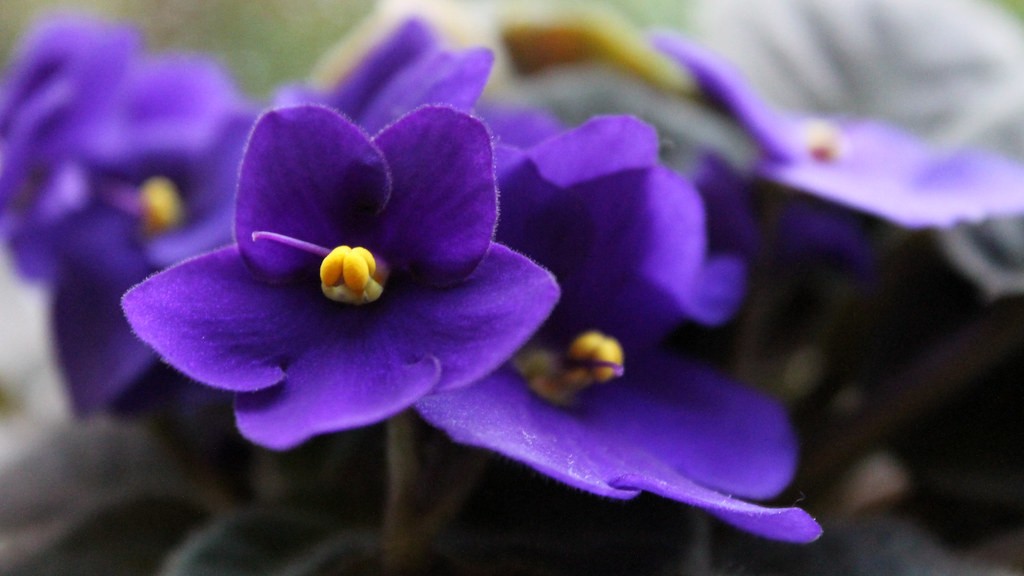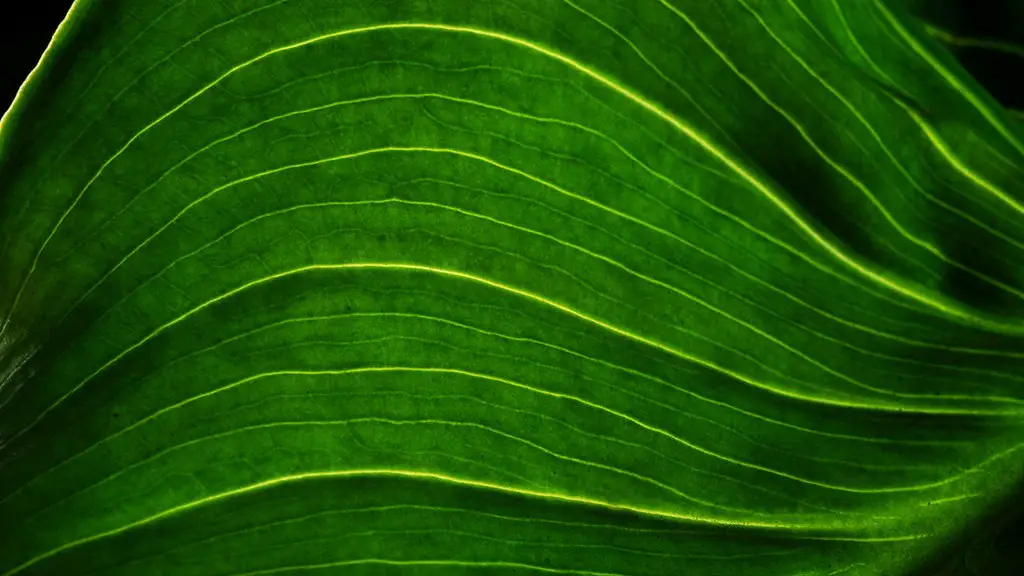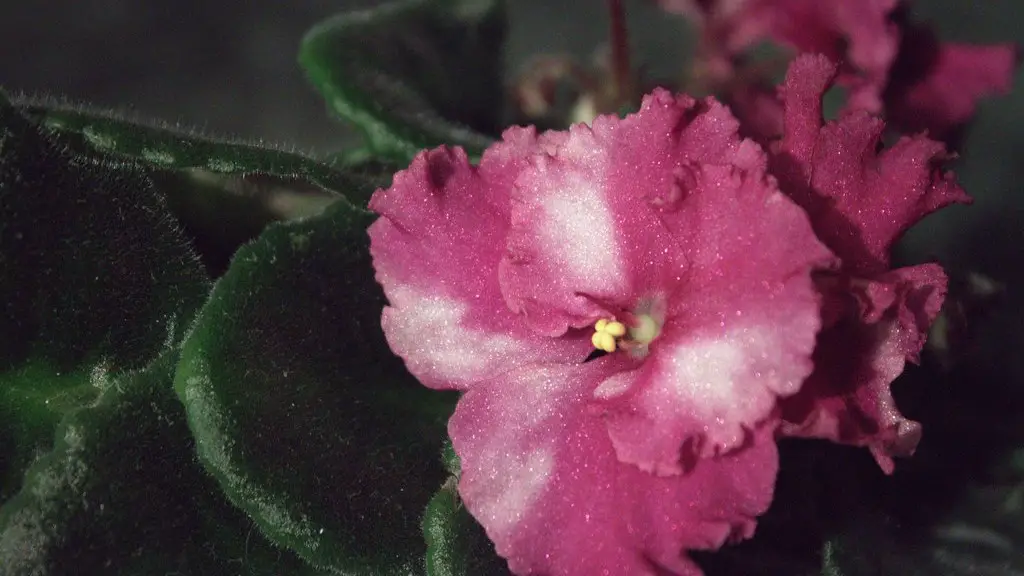There are a few things that could be eating your African violets. It could be insects, such as aphids, mealybugs, or thrips. These pests suck the sap out of the leaves, which can cause them to turn yellow, brown, or black. Or, it could be a fungus, such as black spot or powdery mildew. These can cause the leaves to turn yellow or brown and can make the plant look sickly. If you’re not sure what’s eating your plant, take a sample to your local nursery or Cooperative Extension office for identification.
There are a few possible causes for your African violets not looking their best. One possibility is that they are not getting enough light. African violets need bright, indirect light in order to thrive. Another possibility is that they are not getting enough water. African violets need to be kept moist, but not soggy. Try to maintain a consistent watering schedule and be sure to allow the soil to dry out somewhat between waterings. Finally, African violets are susceptible to a variety of pests, including mealybugs, aphids, and spider mites. If you see any of these pests on your plants, be sure to treat them promptly.
How do I keep bugs off my African Violets?
If you have a light infestation of Mealy Bugs, try rubbing them off with a cotton swab soaked in rubbing alcohol. Then, rinse your African Violet thoroughly with lukewarm water, and let any excess water drain off. Repeat this procedure each day to remove any newly hatched Mealy Bugs.
Most caterpillars are easy to spot and they are unabashed feeders, making no effort to hide the fact that they are eating your African Violets. Some common species known to feed on African Violets include Armyworms, Fruitworms and Loopers. If you see any of these pests on your plants, take action to remove them as soon as possible to prevent further damage.
What do you spray on African Violets
If you have an African Violet that is being bothered by insects, the African Violet Society of America recommends using Neem oil as an insecticide. To use, simply spray the foliage of your plant and then wipe it gently with a soft cloth. Repeat treatments until symptoms subside.
Flea Beetles can cause a lot of damage to African Violets if left untreated. They feed on the foliage of African Violets, chewing small, round holes in the leaves. They have large hind legs similar to a cricket’s, and they jump like fleas when disturbed.
Can you spray African violets with soapy water?
The spray bottle method is an easy way to clean African Violet leaves with liquid soap. Simply fill the bottle with a mild solution of liquid soap and water, and spray a fine mist of soapy solution on the leaves (avoid the center crown).
This is a great way to get rid of mealybugs on African violets! Simply mix 1 cup rubbing alcohol, 1 teaspoon Volck oil and 1 quart water in a plant mister and mist the affected areas. The alcohol will dry out the bugs and kill them.
What do thrips on African Violets look like?
If you see silver or gray streaks on your violet leaves, it is likely due to thrips. Thrips are small insects that feed on the juices of plants, and they can leave behind streaks or speckles as they feed. If you see thrips on your violet, you can try to remove them with a soft cloth or by gently brushing them off. If you see a lot of thrips, you may need to treat your plant with an insecticide.
To treat insects, add a few drops of neem oil to water and mist the leaves. For powdery mildew, mix 1 teaspoon of neem oil with 1 cup of water and spray generously on the leaves.
Do mice eat African Violets
Mice are small, furry mammals whose refined palate is drawn to the sweet-tasting anthers of African Violets. Unlike Thrips, Earwigs or other insects which feed on the pollen of African Violets, mice will gnaw off the entire pollen sac, leaving little trace of its contents.
Adding hydrogen peroxide to your fertilizer water can help prevent algae growth. Just be sure not to pour the water directly on top of your plants, as they may not absorb it properly. Instead, try to pour it around the edge of the pot to encourage capillary action.
Is baking soda good for African violets?
If your African violets have powdery mildew and you’re not seeing any improvement, try spraying them lightly with a baking soda and water mixture. You can also spray the area around the plant with Lysol or another household disinfectant, but be careful not to get the spray on the leaves.
Cyclamen mites are small, barely visible pests that infest African violets and other plants in the Gesneriad family. The mites are difficult to control and cause extensive damage to affected plants. Cyclamen mites feed on plant cells, causing the plant to produce excessive amounts of plant hair. In addition, the mites cause the leaves of the plant to curl up around the edges. The mites are difficult to control and can cause extensive damage to the plant. If you suspect that your plant has been infested with cyclamen mites, it is important to take action immediately to prevent further damage.
Should I remove damaged leaves African violet
To prune an African violet, simply remove dead or damaged leaves and spent flowers. This will allow new growth to access more light and air. African violets can be pruned at any time of the year.
Violets are a type of flower that is not only pretty to look at, but also provides food for many different types of animals. Grouse, juncos, mourning doves, and small mammals all eat violet seeds, while wild turkeys eat the roots. Deer and cottontail rabbits also enjoy eating the foliage of violets. So next time you see a violet, remember that it’s not just a pretty face – it’s also an important part of the food chain!
What insect eats violet leaves?
As their name suggests, Leaf Beetles primarily feed on the foliage of African Violets. These pests typically chew small holes at the edges of the leaves, which can eventually lead to the leaf dying and falling off. In addition to causing physical damage to the plant, Leaf Beetles also transmit diseases that can further threaten the health of your African Violet. If you notice leaves on your plant with holes or that appear to have been eaten, inspect the plant carefully for Leaf Beetles and take appropriate action to remove them.
Epsom salts are a great way to provide your plants with essential magnesium and sulfur. These two minerals are needed to produce beautiful blooms and healthy foliage. To use, simply mix one and a half teaspoons of Epsom salts in a quart of tepid water and swirl to dissolve. Then water your plants (below the leaves) with this solution once a month.
Warp Up
The most likely culprits are aphids, mealybugs, or thrips. These pests are all small insects that feed on the sap of plants.
The most likely culprits for eating your african violets are aphids, mealybugs, or whiteflies. All of these pests are small, insect-like creatures that suck the sap out of plants. They can weaken and even kill your plants if left unchecked. The best way to get rid of them is to use an insecticide or to remove them by hand.





